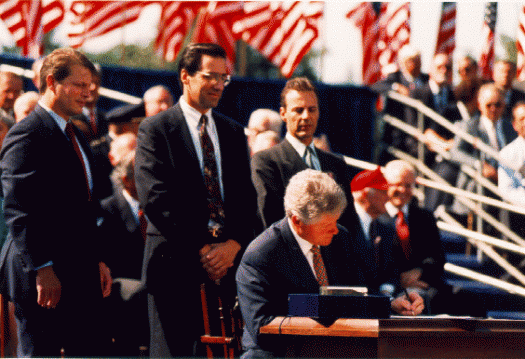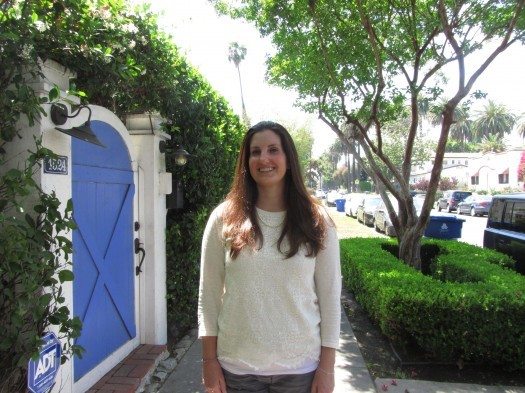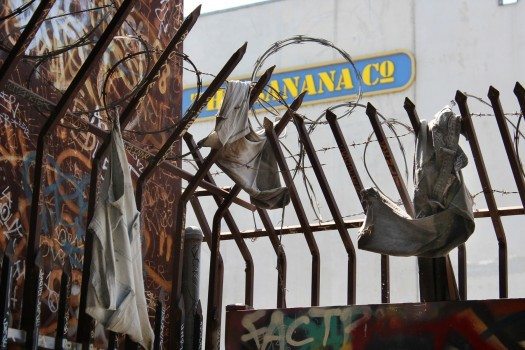

Bill Moyers, who turned 80 on Thursday, has been one of the most prolific and influential figures in American journalism. Not content just to diagnose and document corporate and political malpractice, Moyers has regularly taken his cameras and microphones to cities and towns where unions, community organizations, environmental groups, tenants rights activists and others were waging grassroots campaigns for change. Moyers has given them a voice. He has used TV as a tool to expose political and corporate wrongdoing and to tell stories about ordinary people working together for justice.
He has introduced America to great thinkers, activists and everyday heroes typically ignored by mainstream media. He has produced dozens of hard-hitting investigative documentaries uncovering corporate abuse of workers and consumers, the corrupting influence of money in politics, the dangers of the Religious Right, conservatives’ attacks on scientists over global warming and many other topics. A gifted storyteller, Moyers’ TV shows, speeches and magazine articles have roared with a combination of outrage and decency,


You have to be living in a cave to miss the brouhaha about French economist Thomas Piketty’s blockbuster Capital in the 21st Century. His book documents the widening gulf between the rich and the rest of us by examining tax rolls and other arcane data from before the last century in this country and Europe. He demonstrates conclusively that taxes on work are higher than taxes on wealth, playing a key role in creating and maintaining the gap.
That disparity was underscored again this month when the Los Angeles Business Journal published its list of the 50 richest in our region. According to the Journal the “aggregate net worth, adjusted for inflation” of the wealthiest half-a-hundred increased by $29 billion during the last five years. That includes four years of the Great Recession followed by disturbingly slow recovery, when huge unemployment rates kept a lot of people from sleeping.
» Read more about: Deliberately Unequal: Policy Choices at Inequality’s Roots »


An idea that only a year ago appeared both radical and impractical has become a reality. On Monday, Seattle struck a blow against rising inequality when its City Council unanimously adopted a citywide minimum wage of $15 an hour, the highest in the nation.
This dramatic change in public policy is partly the result of changes brought about by last November’s Seattle municipal elections. But it is also the consequence of years of activism in Seattle and around the country. Now that Seattle has established a new standard, the pace of change is likely to accelerate quickly as activists and politicians elsewhere seek to capture the momentum. Five years from now, Americans may look back at this remarkable victory and wonder what all the fuss was about.
Seattle now joins a growing list of cities—including San Francisco, Santa Fe, Albuquerque, San Jose,
» Read more about: How Seattle’s $15 Minimum Wage Victory Began in Zuccotti Park »


The commission charged with accrediting California’s two-year community colleges convened its three-day semiannual meeting in Sacramento yesterday morning. Conspicuously absent from the public agenda, however, is any mention of the action that has brought down an unprecedented firestorm of controversy onto the publicity-shy agency — its disaccreditation of the state’s largest community college.
At least the Accrediting Commission for Community and Junior Colleges (ACCJC) hasn’t included the fate of City College of San Francisco (CCSF) on its schedule for Friday’s public portion of the meeting. What’s on the program for the first two days — the sessions when the agency makes its substantive findings and decisions — is anyone’s guess. That part of the meeting is conducted in secret.
What is now certain is that no 11th-hour reprieve from the school’s approaching date with de-accreditation will be forthcoming. Supporters of the embattled college had been holding out hope that the commission would use the meeting to announce an extension to the July 31 termination deadline it set for the school’s accreditation during last June’s secret sessions.


(They drive our trains and buses, teach our children, repair our roads and protect our safety. Public employees perform these and countless other jobs, although they remain mostly off the radar of the public they serve. Our Common Ground series takes us into the lives of these men and women.)
In a large lecture hall in the Biological Sciences Building of Cal State L.A., a student in the introductory anthropology class raised his hand to inquire as to whether or not female chimpanzees demonstrated the same sexual behaviors with each other that males did. “Not that it matters…” he remarked sheepishly. His question elicited giggles across the room while Dr. Jessica Bodoh-Creed shook her head knowledgably, visibly pleased with engagement of her students as she pointed out some key differences in male and female chimp behavior. With captivating energy, Dr. Bodoh-Creed continued her lecture on the behavioral patterns of chimpanzees with anecdotes and media to maintain active listening among her one hundred and forty students.
» Read more about: Dr. Jessica Bodoh-Creed: Adjunct for Now, Academic Forever »


Read the Writing
Read the writing on the cinder block wall:
Joker, Jasper, Dopey, Termite, Tokes, Crow.
It’s not an “is it art?” debate, at all;
these are the monochromatic zip codes
of my gangster, tattooed, sharp-creased cousins.
Scribbled in black on a bus bench, strangled
names crossed out, over names crossed out again,
red under yellow under green tangled
like wire. Memo, Cowboy, Flyboy, Topper.
Neil Armstrong planted a flag on the moon;
it can’t be seen from their clearly marked world
where, if you don’t live there, you better run.
Tight fence of paint, like barbed wire that’s hidden.
Trespassed borders end lives, I’m not kidding.
Source: My Name on Top of Yours (2013),


A revamped Hollywood Film Festival aims to bring cinema and activism together in L.A.
Activists, filmmakers and audiences alike have a reason to be excited about the 2014 Hollywood Film Festival that unspools this October. Under new management, the festival, which was founded in 1997, is shifting its focus to the socially engaged side of cinema and turning the spotlight on films with a message.
Jon Fitzgerald, who first managed the Hollywood Film Festival in 2013 and has experience putting on similar festivals around the globe, will return as the event’s organizer. This year, however, a separate organization he heads, CineCause, has acquired the festival and plans to give it a decidedly different tone.
Speaking to Capital and Main by phone from a documentary shoot in Florida, Fitzgerald said CineCause plans to remake the festival into a showcase for filmmakers who want to make a change.


Pity the poor, beleaguered Malibu homeowner. Median income over $135,000 is about two-and-a-half times the County average, and the average home’s value is so far past the County average that the Census Department literally doesn’t count that high. Good for them. But they’re also the NIMBY champs, they don’t like sharing funding with poor schools, and in their free time, folks in the ‘Bu go around erecting illegal signs to cheat you and me out of our right to access the public beach. They have it rough and, as the front page of the L.A. Times explained, Airbnb is making it worse.
Malibu homeowners have some reasonable points: “party houses” that disturb neighbors and probably violate zoning ordinances, and millions of dollars of lost city revenue. At the same time, it’s hard to get too worked up over the poor,
» Read more about: The Enemy of My Enemy Is Still a Jackass »


 People vacation on the Hawaiian island of Kaua’i to swim, snorkel and surf. And to unplug. We did. For three weeks. My wife and I also spent one Saturday night at a rally supporting a ballot initiative to control the use of Genetically Modified Organisms (GMOs) and pesticides on the island. Admittedly, not the most touristy thing to do.
People vacation on the Hawaiian island of Kaua’i to swim, snorkel and surf. And to unplug. We did. For three weeks. My wife and I also spent one Saturday night at a rally supporting a ballot initiative to control the use of Genetically Modified Organisms (GMOs) and pesticides on the island. Admittedly, not the most touristy thing to do.
Part of the draw was Makana, which means “gift” in Hawaiian, which he surely is. Makana has been hailed as Hawaii’s greatest young slack-key musician and songwriter. You may know him because he wrote a song, “We Are the Many,” that became the anthem of the Occupy Movement. Slack-key, which characterizes Hawaiian music, was the legacy of Mexican cowboys, who came to the island as contract workers over a century ago – the beginning of a long history of workers imported there from other countries.
We were also interested because we had stumbled across the anti-GMO movement while exploring the island a year ago.


When you hear about poverty wages and extreme anti-union tactics practiced by the largest company of its kind in the world, it’s natural to think of Walmart. But California-based Taylor Farms is giving the retail giant a run for its money when it comes to low-road labor practices, while offering another example of why it’s time for the U.S. to clamp down on the use of temp agencies by huge companies trying to evade responsibility for unconscionable working conditions.
Taylor Farms is the world’s largest producer of fresh-cut vegetables, and supplies some of the nation’s biggest fast food and grocery chains including McDonald’s, Subway, Pizza Hut, Safeway, Ralphs and Kroger. They operate in nine states as well as Mexico, and earned revenues of $1.8 billion in 2012.
A visit to the company website offers a bucolic image of a multigenerational family-run business with the highest ethical standards.